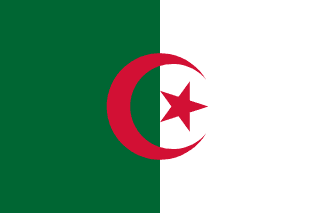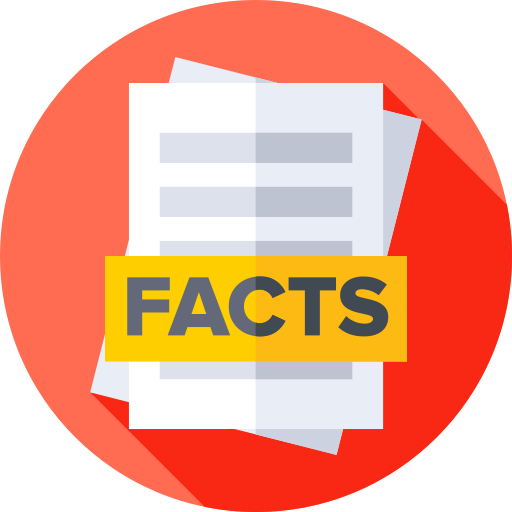Algeria - Geography

Here, let us take a look at the Geography of Algeria. Largest country in Africa but 80% desert; canyons and caves in the southern Hoggar Mountains and in the barren Tassili n'Ajjer area in the southeast of the country contain numerous examples of prehistoric art -- rock paintings and carvings depicting human activities and wild and domestic animals (elephants, giraffes, cattle) -- that date to the African Humid Period, roughly 5,000 to 11,000 years ago, when the region was completely vegetated. Mother's mean age at first birth is (), whereas, the Maternal mortality ratio is 62 deaths/100,000 live births (2023 est.)
Geographical data of Algeria
| Location | Northern Africa, bordering the Mediterranean Sea, between Morocco and Tunisia |
|---|---|
| Geographic coordinates | 28 00 N, 3 00 E |
| Map references | Africa |
| Tarrain | mostly high plateau and desert; Atlas Mountains in the far north and Hoggar Mountains in the south; narrow, discontinuous coastal plain |
| Natural Resources | petroleum, natural gas, iron ore, phosphates, uranium, lead, zinc |
| Natural Hazards | mountainous areas subject to severe earthquakes; mudslides and floods in rainy season; droughts |
| Irrigated Land | 13,819 sq km (2019) |
| Major rivers (by length in km) | |
| Major aquifers | Lullemeden-Irhazer Aquifer System, Murzuk-Djado Basin, North Western Sahara Aquifer, Taoudeni-Tanezrouft Basin |
| Land Boundaries | 6,734 km |
| Border Countries | Libya 989 km; Mali 1,359 km; Mauritania 460 km; Morocco 1,941 km; Niger 951 km; Tunisia 1,034 km |
| Coastline | 998 km |
| Climate | arid to semiarid; mild, wet winters with hot, dry summers along coast; drier with cold winters and hot summers on high plateau; sirocco is a hot, dust/sand-laden wind especially common in summer |
| Area | |
| Total Area | |
| Land Area | 2,381,740 sq km |
| Water Area | 0 sq km |
| comparative Area | slightly less than 3.5 times the size of Texas |
| Maritime Claims | |
| Territorial sea | 12 nm |
| Contiguous zone | 24 nm |
| Exclusive fishing zone | 32-52 nm |
| Elevations | |
| Highest point | Tahat 2,908 m |
| Lowest point | Chott Melrhir -40 m |
| Mean elevation | 800 m |
| Land Use | |
| Agricultural land | 17.4% (2023 est.) |
| Agricultural land: arable land | arable land: 3.2% (2023 est.) |
| Agricultural land: permanent crops | permanent crops: 0.4% (2023 est.) |
| Agricultural land: permanent pasture | permanent pasture: 13.8% (2023 est.) |
| Forest | 0.7% (2023 est.) |
| Other | 81.9% (2023 est.) |
Population Distribution
The vast majority of the populace is found in the extreme northern part of the country along the Mediterranean Coast
People and Society
In Algeria, the different Ethnic groups are such that we have: Arab-Amazigh 99%, European less than 1%
| Population | |
|---|---|
| Pop growth rate | 1.54% (2024 est.) |
| Birth rate | 20.2 births/1,000 population (2024 est.) |
| Death rate | 4.4 deaths/1,000 population (2024 est.) |
| Health expenditure | |
| Physicians Density | |
| Hospital bed Density | 1.6 beds/1,000 population (2017 est.) |
| Total fertility rate | 2.94 children born/woman (2024 est.) |
| Gross reproduction rate | 1.43 (2024 est.) |
| Contraceptive prevalence rate | |
| Est married women (ages 15-49) | 56% (2023 est.) |
| Literacy | |
| Education expenditures | |
| Net Migration rate | -0.5 migrant(s)/1,000 population (2024 est.) |
| Nationality | Algerian | Algerian(s) |
| Languages | |
| Religions | Muslim (official; predominantly Sunni) 99%, other (includes Christian, Jewish, Ahmadi Muslim, Shia Muslim, Ibadi Muslim) <1% (2012 est.) |
| Age Structure | |
| 0-14 years | 30.8% (male 7,411,337/female 7,062,794) |
| 15-64 years | 62.3% (male 14,846,102/female 14,441,034) |
| 65 years and over | 6.9% (2024 est.) (male 1,597,382/female 1,663,824) |
| Dependency Ratios | |
| Total dependency ratio | 60.6 (2024 est.) |
| Youth dependency ratio | 49.4 (2024 est.) |
| Elderly dependency ratio | 11.1 (2024 est.) |
| Potential support ratio | 9 (2024 est.) |
| Median Age | |
| Total | 29.1 years (2024 est.) |
| Male | 28.8 years |
| Female | 29.4 years |
| Urbanization | |
| Urban population | 75.3% of total population (2023) |
| Rate of urbanization | 1.99% annual rate of change (2020-25 est.) |
| Major urban areas (Pop) | 2.902 million ALGIERS (capital), 936,000 Oran (2022). |
| Sex Ratio | |
| At birth | 1.05 male(s)/female |
| 0-14 years | 1.05 male(s)/female |
| 15-64 years | 1.03 male(s)/female |
| 65 years and over | 0.96 male(s)/female |
| Total population | 1.03 male(s)/female (2024 est.) |
| Infant Motality | |
| Total | 18.7 deaths/1,000 live births (2024 est.) |
| Male | 19.8 deaths/1,000 live births |
| Female | 17.5 deaths/1,000 live births |
| Life Expectancy at birth | |
| Total population | 77.9 years (2024 est.) |
| Male | 77.2 years |
| Female | 78.7 years |
| Drinking Water Sources | |
| Improved: urban | urban: 96.1% of population (2022 est.) |
| Improved: rural | rural: 90.4% of population (2022 est.) |
| Improved: total | total: 94.7% of population (2022 est.) |
| Unimproved: urban | urban: 3.9% of population (2022 est.) |
| Unimproved: rural | rural: 9.6% of population (2022 est.) |
| Unimproved: total | total: 5.3% of population (2022 est.) |
| Sanitation facility acess | |
| Improved: urban | urban: 98.3% of population (2022 est.) |
| Improved: rural | rural: 91.7% of population (2022 est.) |
| Improved: total | total: 96.6% of population (2022 est.) |
| Unimproved: urban | urban: 1.7% of population (2022 est.) |
| Unimproved: rural | rural: 8.3% of population (2022 est.) |
| Unimproved: total | total: 3.4% of population (2022 est.) |
| Alcohol consumption per capita | |
| Total | 0.59 liters of pure alcohol (2019 est.) |
| Beer | 0.31 liters of pure alcohol (2019 est.) |
| Wine | 0.2 liters of pure alcohol (2019 est.) |
| Spirits | 0.08 liters of pure alcohol (2019 est.) |
| Other alcohols | 0 liters of pure alcohol (2019 est.) |
| Tobacco use | |
| Total | 21.4% (2025 est.) |
| Male | 41.6% (2025 est.) |
| Female | 0.6% (2025 est.) |
| Child marriage | |
| Women married by age 15 | 0% (2019) |
| Women married by age 18 | 3.8% (2019) |
Demographic profile
All Important Facts about Algeria
Want to know more about Algeria? Check all different factbooks for Algeria below.









